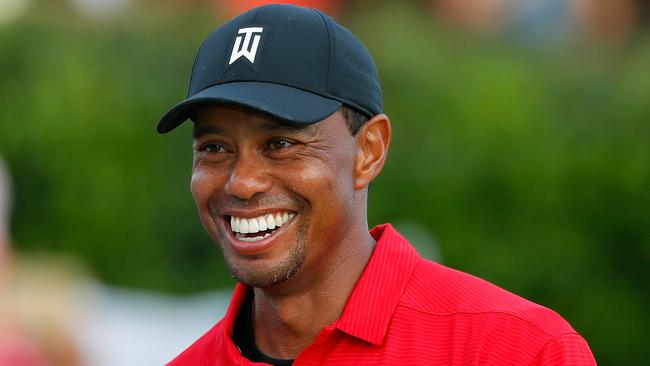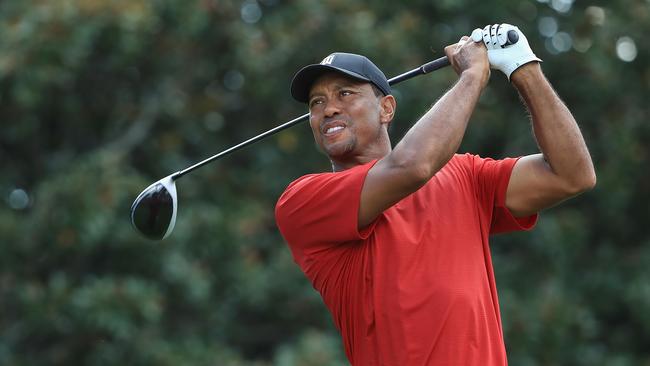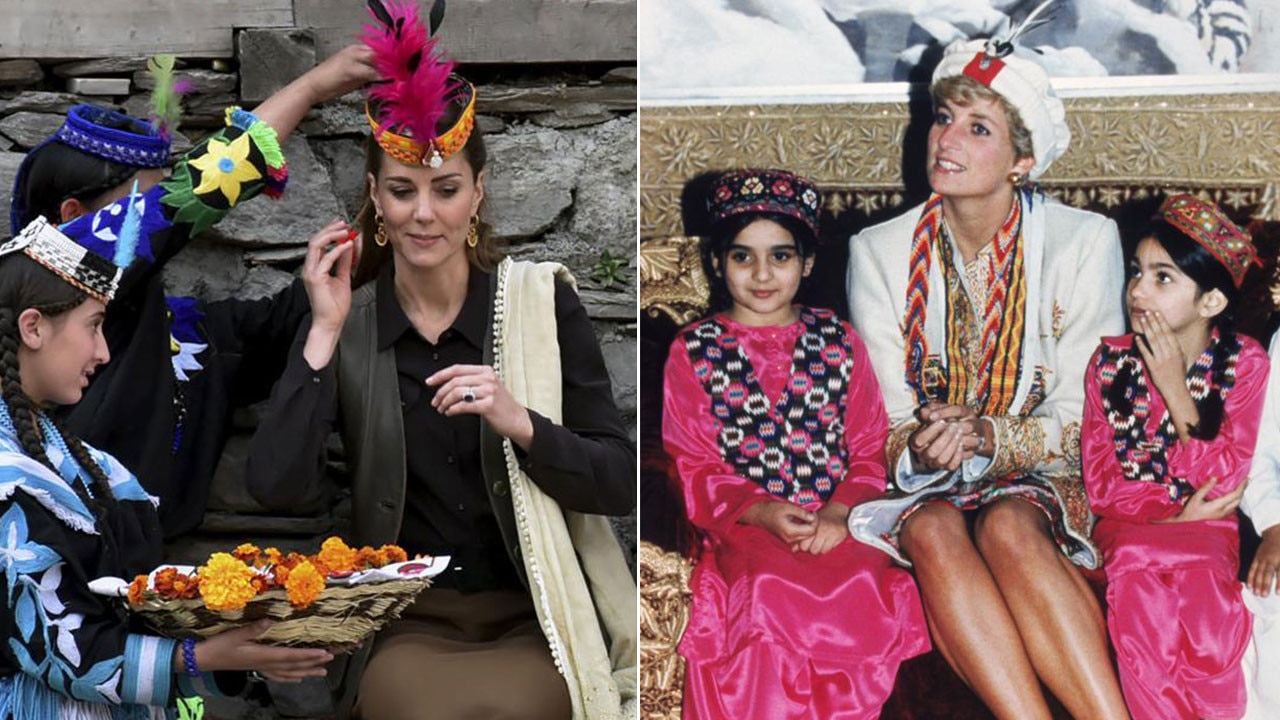Less ego and more fun: Reborn Tiger Woods has tamed worst traits
The American arrives at the Ryder Cup more popular than ever after his comeback victory.

And now to the next stage of the miracle - Tiger Woods winning a Ryder Cup in Europe and looking like he is actually having fun in the process. Heck, would Europe’s boisterous fans begrudge Woods the winning putt if he stays on this extraordinary, emotional roll right through to Sunday?
Perhaps not, after one of the great comebacks - and we are not only talking about his golf. Sunday night’s scenes at the Tour Championship felt more affecting than any of Woods’s 14 major triumphs and not only for the teary-eyed man himself.
Golf’s struggle is less about crushing opponents than conquering your own vulnerabilities, the doubts, the fears in your head - a bit like life, really - and Woods is far more accessible and admirable to millions after fighting dodgy knees, a bad back, divorce, hair loss, addiction and all the rest of the human frailties that have been so painfully, often excruciatingly, laid bare over the past nine years.
Woods has arrived in Paris more popular than he ever was as the stone-faced, monosyllabic uber-champion, crushing the field, scowling at reporters and intimidating not only opponents but team-mates after those gripping scenes down the 18th at East Lake when he seemed genuinely choked up by the wave of affection.
“Vintage Tiger Woods,” one commentator proclaimed on Sunday evening but, aside from the familiar red shirt, this felt very different. Woods’s arrival at the Ryder Cup will underline how much has changed, and for the better, according to former friends and foes who say that he may be a lesser golfer than at his unrivalled peak but a much better man and team player for the United States.
“You are seeing a different Tiger Woods,” Butch Harmon, his former coach, told The Times. “He’s grown up a lot, matured a lot. You will see in Paris a different Tiger to the crowds, to teammates. It’s very nice to see, to be honest with you.”
An appearance in front of the media today will be the first test of just how much Woods relishes his trip to France. There is no disputing that his relationship with the Ryder Cup has been fraught; an individual record far below what would be expected from such a pre-eminent player, and six team defeats out of seven.
The one time he got to lift the cup as a player was in Brookline, Massachusetts in 1999 and Andrew Coltart remembers only too well what it was like coming up against a man who finished the season with eight wins on the US PGA Tour, including his second major, the US PGA Championship.
It was Coltart’s luck to be drawn against a phenomenon in the singles and he explains how, even with Woods’s comeback for his first win in five years, no European player will have to tame the beast that he faced.
“My wife had given birth the week before [the Ryder Cup] and the baby wasn’t sleeping so she was naturally upset when she called,” Coltart said. “And I was like, ‘Never mind that, I’ve got Tiger Woods tomorrow. How do you think I feel?’
“I tried to get some shut-eye in my room when one of the American commentators ran through the singles and it was ‘Woods against Coltart, this one is 8 and 7,’ which I thought was pretty disrespectful. No one will be saying that this week.”

Not even after his return to 13th in the world, from sliding out of the top 1,000? “It can’t be the same as then,” Coltart said. “Tiger’s career had not had blemishes then and the graph was going sky-high.
“So while there is an incredible interest and we love to see him back contending, he doesn’t carry the aura he had then. A lot of these players were kids when he was at his peak. Their mental fortitude is in a better place to deal with Tiger. And it’s much more a world tour now so they are not rookies in the same way.”
It will certainly be interesting to see if Woods tries the intimidation that he went for with Coltart on the first tee. The Scot had not played at all on the first two days and Woods greeted him by saying: “Andrew, I know you haven’t played yet so this is the 1st and it’s dog-leg, right to left, par four.”
Coltart tried to fight back on the 4th when he hit his approach to three feet of the hole. Woods followed and was marginally closer. Coltart offered to pick them both up but Woods said that he wanted them putted out.
“I wanted to show him I wasn’t scared so I gave him his and putted mine and apparently it got up his nose. So maybe it was the worst thing I could have done but losing 3 and 2 I felt I gave him a good game.”
Woods’s Ryder Cup record stands at an unimpressive 13 wins, 17 losses, three halves. Playing with him, never mind against, was not simple in the era when he was arguably the world’s greatest sportsman.
Coltart, who will commentate at Le Golf National for Sky Sports, said: “It’s taken him a while to embrace the team aspect. It’s not how he was trained by his father, which was being out on your own, fighting for survival, kill or be killed. He had a different childhood to everybody else, the way he was brainwashed to channel his focus, as his father put it ‘to change the face of humanity’. Imagine being told that as a kid.”
As Woods’s coach from 1993 to 2004, spanning three US Amateur titles and eight majors including the “Tiger Slam”, Harmon saw first-hand how Woods could affect those around him, even unwittingly.
“Fred Couples once told me the difficulty the US players had in foursomes and four-balls is that they tried so doggone hard because they didn’t want to let Tiger down,” Harmon said. “So playing partners get out of the realm of how they usually play.”
Harmon believes that it is different now because Woods’s team-mates do not hold him in quite the same awe. He tells a story of how Woods absent-mindedly stood for a team photograph at the last Ryder Cup even though he was only a vice-captain.
“The players were shooing him off, ‘Get out of here.’ Tiger loved it,” he said. “He’s back to being the way he was as a kid, having fun. It’s fun seeing him first back playing and being more fun to be around.
“All these young kids didn’t have their brains beat out by Tiger on the tour. By the time they came through he was past his prime or for the last couple [of years] hardly played at all. It’s a different personality to the team.
“He’s been such an individualist. His DNA was to beat everyone standing in his way, that was the way he was raised and he was very good at it. But you’ll see he’s very different around the team room now.”
Harmon was part of the discussions for the 2004 Ryder Cup when Hal Sutton, the US captain, disastrously paired Woods with Phil Mickelson.
“We all shuddered and said, ‘I’m really not sure that’s a very good idea.’ That was at a point in time when the two didn’t really talk very much to each other.”
Harmon expects Woods to be paired at least once with Bryson DeChambeau, the 25-year-old Californian, renowned for such attention to detail that he will even spray practice balls with water to replicate conditions of morning dew.
“DeChambeau is kind of a mad scientist the way he goes about it but they seem to hit it off,” Harmon said. “DeChambeau asks him questions and Tiger likes the science of the golf swing, he’s inquisitive about how people play so it’s an odd couple but a good match.”
So what can we expect this week from the man who, as recently as seven months ago, was 104th on the US standings, with Sunday’s scenes unthinkable?
Harmon, who confirmed that this will be his last Ryder Cup with Sky Sports, said: “People say his record isn’t that good but the US was losing most of those - we haven’t won in Europe in 25 years - and one person can’t win the Ryder Cup.
“Some of us wondered if he would play golf again, much less compete to win, so it’s the best thing that could happen to have Tiger back. It’s remarkable he’s there.”
The Times


